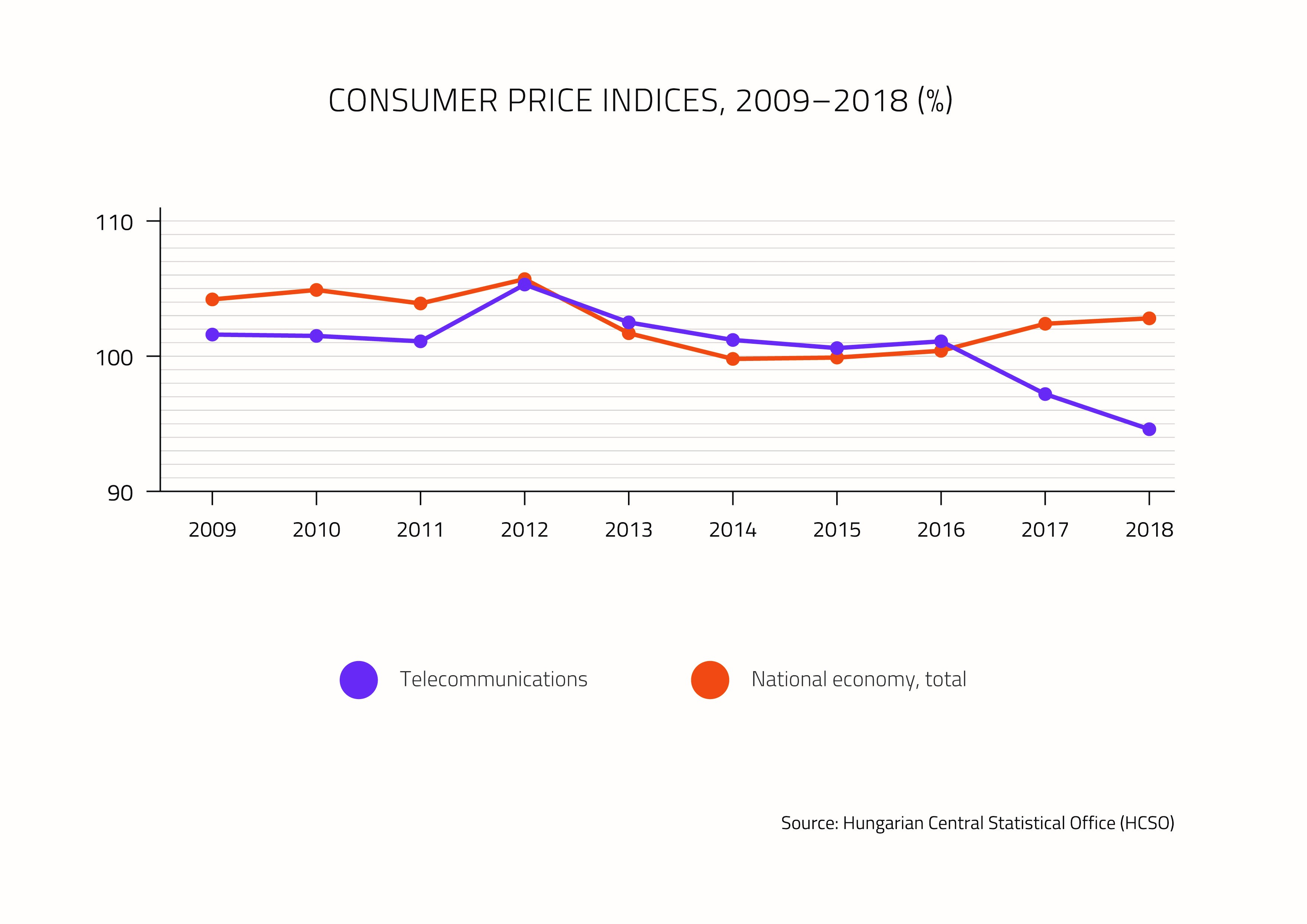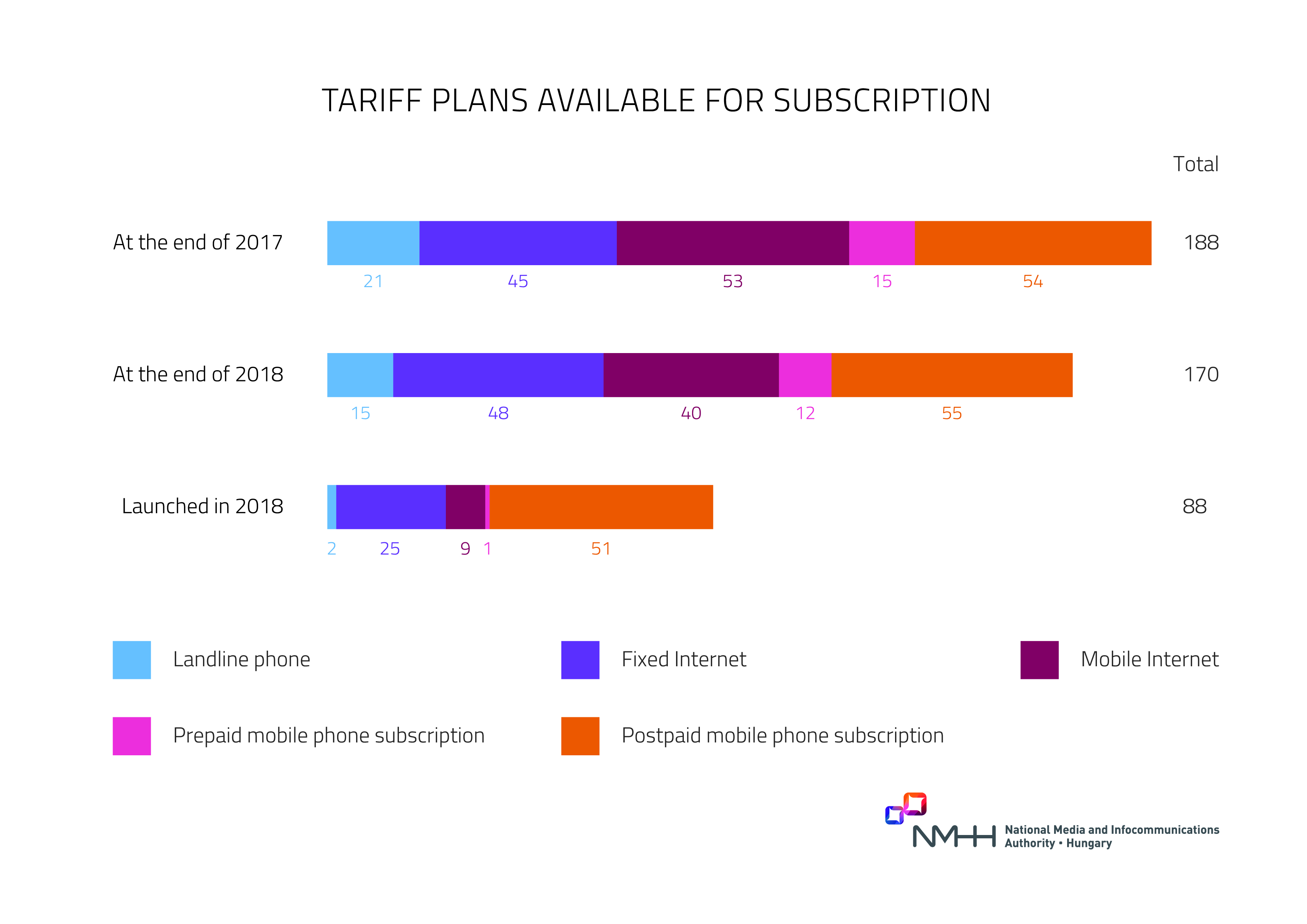NMHH: Internet prices down by 11 per cent last year
In 2018, the price of Internet services fell by 11 per cent, while the price of mobile voice subscriptions decreased to a smaller extent, mainly due to the reduced VAT on Internet services, according to the latest analysis of the price and market supply of telecommunications services carried out by the National Media and Infocommunications Authority (NMHH). The document also reveals that the range of services offered is constantly changing, and more than half of the current tariff plans have been on the market for less than a year.
Price analysis: widening price change gap
In 2018, as in the previous year, the changes in the regulatory system had the greatest impact on the development of telecommunications service prices. As a result of the reduction of the VAT on Internet services to 5 per cent, the gross price of the overwhelming majority of stand-alone Internet services offered by the largest service providers dropped by 11 per cent, with the net prices unchanged, and the price of service packages including Internet fell by 1–8 per cent. In recent years, the gap between the price changes in the national economy and the telecommunications sector has been constantly widening: last year, prices in the telecommunications sector dropped by 5.4 per cent, while the price statistics of the Hungarian Central Statistical Office (HCSO) showed a 2.8 per cent inflation in terms of the national economy as a whole.

Service offer analysis: opaque supply and constant launch of new tariff plans
The range of tariff plans offered by telecommunications service providers is vast, opaque and constantly changing. At the end of 2018, 170 tariff plans were available for subscription in five categories: landline phone, fixed Internet, mobile Internet, prepaid phone and postpaid mobile phone. Out of these, 88 tariff plans—accounting for 52 per cent, i.e. more than half of the total supply—were new, launched since January 2018.

The analysis covered a total of 640 tariff plans, also including closed plans that still have some active subscribers. The great variety of and frequent changes in the tariff plans may be one of the reasons for which 60 per cent of mobile phone users and households having fixed Internet subscriptions have never switched to another tariff plan, as shown by the market research commissioned by the NMHH.
New elements of phone and Internet services in 2018
In the market of telephone services, both Telekom and Invitel reduced the number of new landline tariff plans available for subscription. As a general trend, mobile services tend to include an ever larger data quota, and the same holds true for the roaming data quota as well. Service providers regularly do data quota increasing promotions, e.g. summer double data offers. 2018 saw the launch of a new service offering an unlimited quota of international calls and an unlimited roaming data quota within the EU.
Also in 2018, mobile Internet offers for domestic use under the so-called Superfast Internet Programme, available in municipalities where fixed broadband Internet connection cannot be guaranteed economically, were added to the list of Internet services.